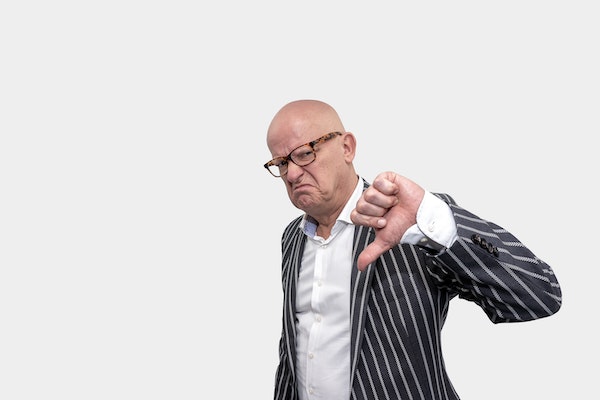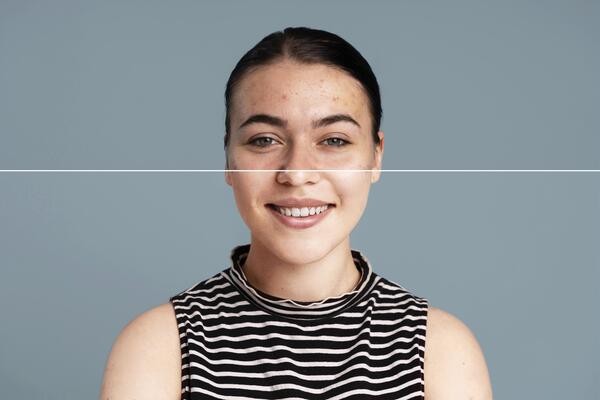
Hair Transplant Fails – Reasons And Solutions
“What if my hair transplant fails?” is a common doubt that stops most people from getting a life-changing hair transplant.
This holds, especially for people who want to enhance their physical appearance but are too scared of a non-satisfactory outcome.
However, hair transplant failures are not very common. Usually, hair transplants have a high success rate of about 95%.
But for those who panic about the remaining 5%, this post is for you.
In this post, we will discuss the reasons behind failed hair transplants and suggest ways how to minimise the risks to almost negligible ones.
How likely is it for a hair transplant to fail?
It is very unlikely that a hair transplant will fail if done with expert hands and modern equipment.
A hair transplant offers a positive ray of hope for those who suffer mentally and socially from baldness, especially from a very young age.
For these people, getting a hair transplant can not only help change their appearance but also boost their self-confidence.
Here are the reasons why one should consider getting a hair transplant.
Only 5% of hair transplants may likely fail. Why would you leave a chance at a new life for a risk rate as low as this?
At the end of this post, you will understand how you can reduce the chances of hair transplant failure up to a maximum of 1% by yourself!
Why does a hair transplant fail in 5% of all candidates?
Before considering the reasons behind failed hair transplants, it is important to note that hair transplant results take time to appear. That is, you will start noticing results visibly in 3 months. For the hair to fully grow, you may have to wait anytime between 6 months and 1 year. If your hair does not reappear after the stipulated time, it is most likely that your hair transplant has failed and these are the reasons why it may happen:
1. Ineligible candidate:
Not everyone is a good candidate for a hair transplant. For example, a person suffering from alopecia areata will continue suffering from hair loss even after a hair transplant.
Similarly, getting a hair transplant at a young age is not a good idea. This is because the hair loss pattern stabilises only at a minimum of 25 years of age.
So, if you get a hair transplant right when you turn 18 years of age, you will develop bald patches later on. As a result, your otherwise successful hair transplant fails.
Therefore, an unsuitable candidate for a hair transplant will not receive the desired outcome.
Abide by the advice of your surgeon. If they ask you to wait for a hair transplant, don’t rush.
2. Poor post-operative care:
Most people who get a hair transplant are either unaware of how they should take care of it or choose to not pay heed to it.
They naturally end up getting a not-so-satisfactory result.
Since it is a daycare procedure, many feel that it is a simple surgery that does not require special care.
In reality, however, a hair transplant is a meticulous and complex process. Pre and post-operative care are equally important for preventing hair transplant failures.
Your hair transplant surgeon will guide you through the preparation and aftercare of the procedure.
You can also read the dos and don’ts of a hair transplant so you can prepare well ahead.
3. Unrealistic expectations:
For a hair transplant procedure, it is important that you set realistic goals and expectations. Every hair transplant is different as every patient is unique.
You have to keep in mind this consideration before you say yes to the surgery.
Not everyone has the same hair quality or hair volume in their donor area and results differ accordingly.
So, an unrealistic expectation from your procedure may feel like your hair transplant has failed when, in reality, it has been successful.
4. Graft rejection:
Can your body reject a hair transplant? The answer is usually no since hair grafts are taken from the scalp or other parts of the body.
That is why this is a rare occurrence when your scalp rejects transplanted hair grafts.
It usually happens due to any underlying disease condition such as Lichen planopilaris (LP).
Hence, it is important for a thorough evaluation by your surgeon before giving you clearance for your hair transplant procedure.
5. Inexperienced surgeon:
Hair transplantation is a delicate and complex procedure. It requires intensive skill and knowledge.
Therefore, choosing the right hair transplant surgeon is as important as all the above-mentioned points. Here’s a guide on how to choose the right hair transplant surgeon.
During the procedure, there may be certain untoward complications.
Only an experienced and well-qualified surgeon can help tackle the crisis and avert the situation.
Moreover, your hair transplant outcome depends upon your donor hair graft. Mishandling the graft may cause a hair transplant to fail.
This happens because a damaged hair graft will not grow new hair.
Only a surgeon having prior experience in the practical field will be able to handle the donor grafts with as much care as required.
A surgeon with several years of experience may charge higher consultation fees but it is worth the extra cost.
6. Use of outdated equipment:
Due to the massive popularity of hair transplants, several shady clinics have risen in different parts of the city.
These clinics offer cheaper hair transplant surgeries but hair transplant failures are common because they use outdated equipment.
In addition, they may not have the correct storage facilities or solutions for the donor hair grafts, thus damaging them.
A trusted clinic should have a hair transplant failure rate of less than 5%. But in most of these clinics, hair transplant fails have been reported to be well over 30%!
The takeaway:
It is essential to make a well-informed decision to choose the right hair transplant surgeon at the right hair transplant clinic to avoid hair transplant failure.
In addition, it is important on your part too to take the necessary measures for maintaining your transplanted hair.
Dr V. S. Rathore has nearly two decades of experience in this field and has conducted over 9600 successful hair transplants.
At his clinic, only state-of-the-art equipment combined with the latest innovation in the procedure is guaranteed. This ensures that hair transplant fails are extremely rare and less than 1%!









